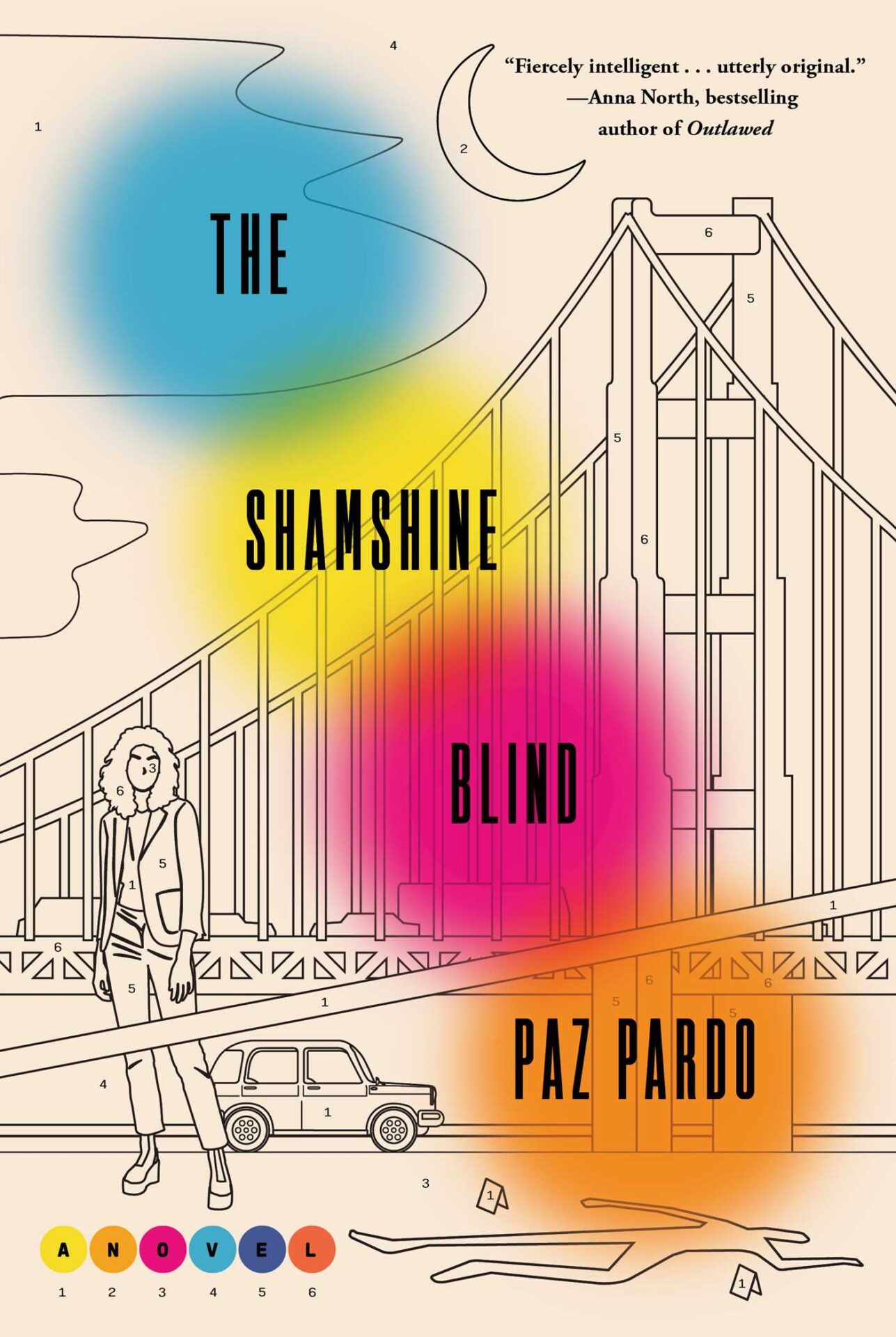
Paz Pardo is joining us today to talk about her novel, The Shamshine Blind. Here’s the publisher’s description:
In an alternate 2009, the United States has been a second-rate power for a quarter of a century, ever since Argentina’s victory in the Falkland’s War thanks to their development of “psychopigments.” Created as weapons, these colorful chemicals can produce almost any human emotion upon contact, and they have been embraced in the US as both pharmaceutical cure-alls and popular recreational drugs. Black market traders illegally sell everything from Blackberry Purple (which causes terror) to Sunshine Yellow (which delivers happiness).
Psychopigment Enforcement Agent Kay Curtida works a beat in Daly City, just outside the ruins of San Francisco, chasing down smalltime crooks. But when an old friend shows up with a tantalizing lead on a career-making case, Curtida’s humdrum existence suddenly gets a boost. Little does she know that this case will send her down a tangled path of conspiracy and lead to an overdue reckoning with her family and with the truth of her own emotions.
What’s Paz’s favorite bit?

Paz Pardo
My favorite bit of The Shamshine Blind comes when the protagonist, Kay Curtida, chases a suspect into psychopigment-blighted San Francisco. The city has been mostly abandoned for twenty years, poisoned with Magenta Obsession—a psychopigment that causes a mania akin to teenage fandom.
It’s impossible to anticipate the impact of driving into a ruined city. I’d never known San Francisco in its heyday, but I could see how far it had fallen. Once-grand Victorians gutted by fire, earthquakes, and mold watched like fallen angels over the pitted streets. The few left intact stood shamefaced for their sagging roofs and pitted facades. Garbage moldered in sweaty piles or crawled along the sidewalks baring its obscene entrails. I’d braced myself for the effect of the lingering pigment, but the wave of obsession hit me with surprising force. Get him. Get him. Get him. The speedometer needled up to sixty.
We raced through the rubble, jouncing across potholes and pigment spills going stale under the full moon. The Magenta bomb hadn’t been the only pigment disaster in the city, just the biggest. My emotions went haywire. By the rubble of City College, the mix of the pink with an old Cerulean Guilt spill had me dwelling on the memory of my father’s face when he caught me using dirty words with a friend. His tone of voice, making my eight-year-old self think he’d never see me the same again. As we turned east onto the remains of Alemany, a Cobalt patch brought back the feeling of packing up Walter’s office after his suicide.
Gaunt figures flickered in the night, lit by burning trash cans. Two people fought under a guttering streetlamp, the only sign of electricity for miles. Under everything, my focus throbbed, burned, oozed. Get him. Get him. Get him. A rusted cable car sagged in the crossroads at Mission and Dolores. I was overcome with a crying jag. The Fiat slowed—my mark was feeling the storm of sentiment too.
Imagining a car chase through a landscape where the emotional bumps were as big as the hills of San Francisco was one of my favorite parts of playing with the central idea of The Shamshine Blind. It was a chance to imagine in miniature what living in this world of weaponized emotions might be like: where every streetcorner can be a different emotional hurricane waiting to happen. It was extra fun to stick this right in the middle of the typical noir car chase. Curtida’s not generally attuned to her feelings—she’s a Depressive, and her ability to repress and ignore them is part of what allows her to do her job tracking down caches of illicit emotion. But in these moments, speeding through intense loci of Sadness and Guilt in a city saturated with Obsession, I got to slip in little details about her past that she’d otherwise have kept buried under her gumshoe front.
I say “speeding,” although that’s my other favorite bit about this part—budget cars in bumpy terrain! Curtida’s in her Renault 4, a ride she describes as a cross between a clown car and a baby shoe. She’s chasing a Fiat Topolino, one of the smallest cars in the world at the time of its launch. When the speedometer hits sixty, that’s sixty kilometers per hour (37.3 mph). In order to keep momentum in the chase, I had to cut down on a lot of my geeky details about these teeny-tiny European cars that I still see on the streets here in Argentina, but the combination of high-stakes language with these workaday autos has always tickled me. One of my favorite things about Shamshine’s world has been allowing the “typical noir” setting to be undermined by elements from my life in Argentina, and the humor that arises from that juxtaposition.
As a reader, I love a speculative thriller set in an intricate world. I love it even more when it’s anchored in a central character whose weaknesses I can identify with, who in spite of their failings keeps rising to the challenges they face. Finding the places where this psychopigment-soaked world forced Curtida’s façade to crack—even just a little bit—let me hope I was writing one of those books.
LINKS:
The Shameshine Blind universal book link
BIO:
Paz Pardo (she/her) is an Argentine-American award-winning playwright and novelist. She received her MFA from the Michener Center for Writers, her undergraduate degree from Stanford University, and is the recipient of a Fulbright scholarship. Raised in America, she currently lives in Argentina. The Shamshine Blind is her first novel. Find out more at PazSays.com.
